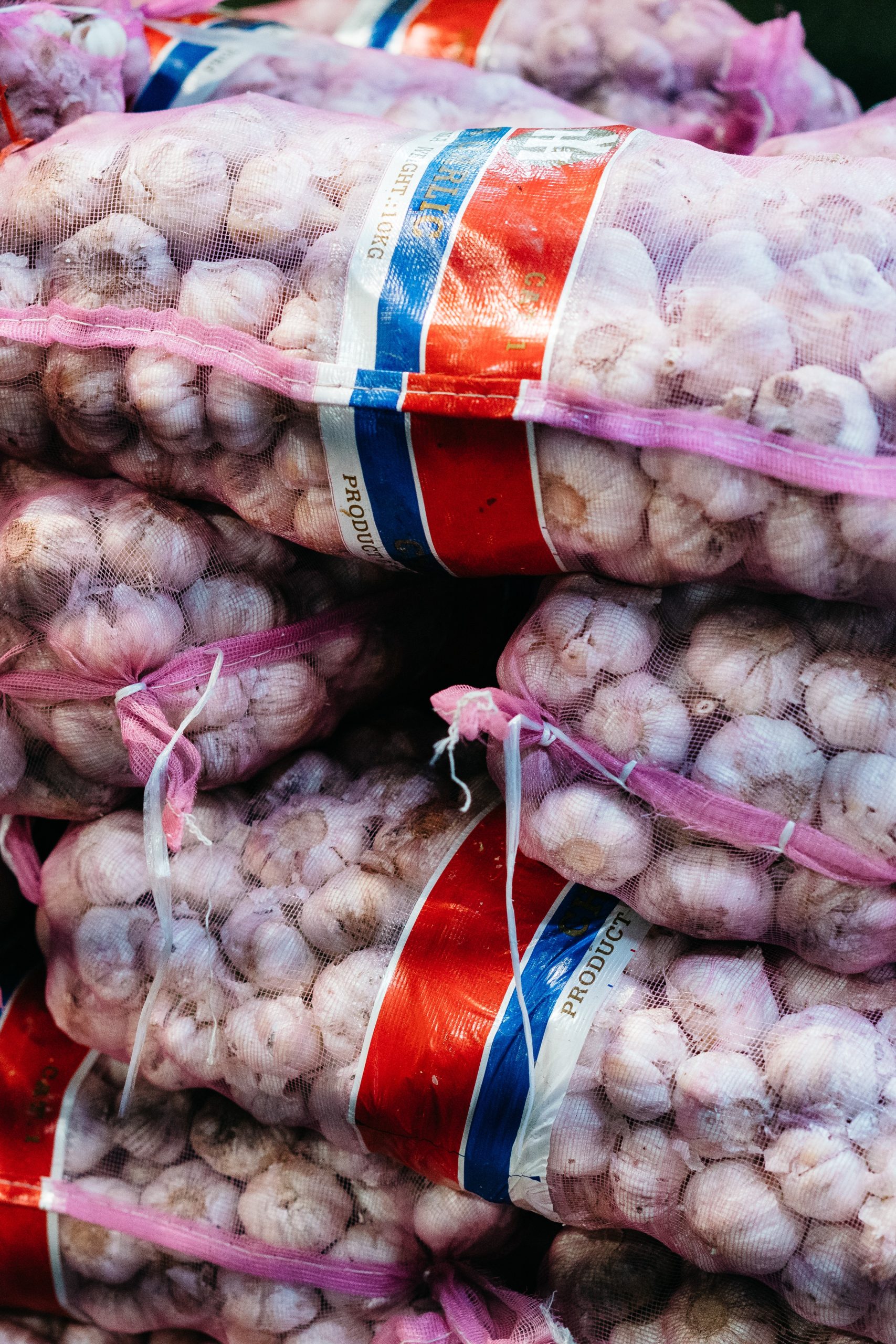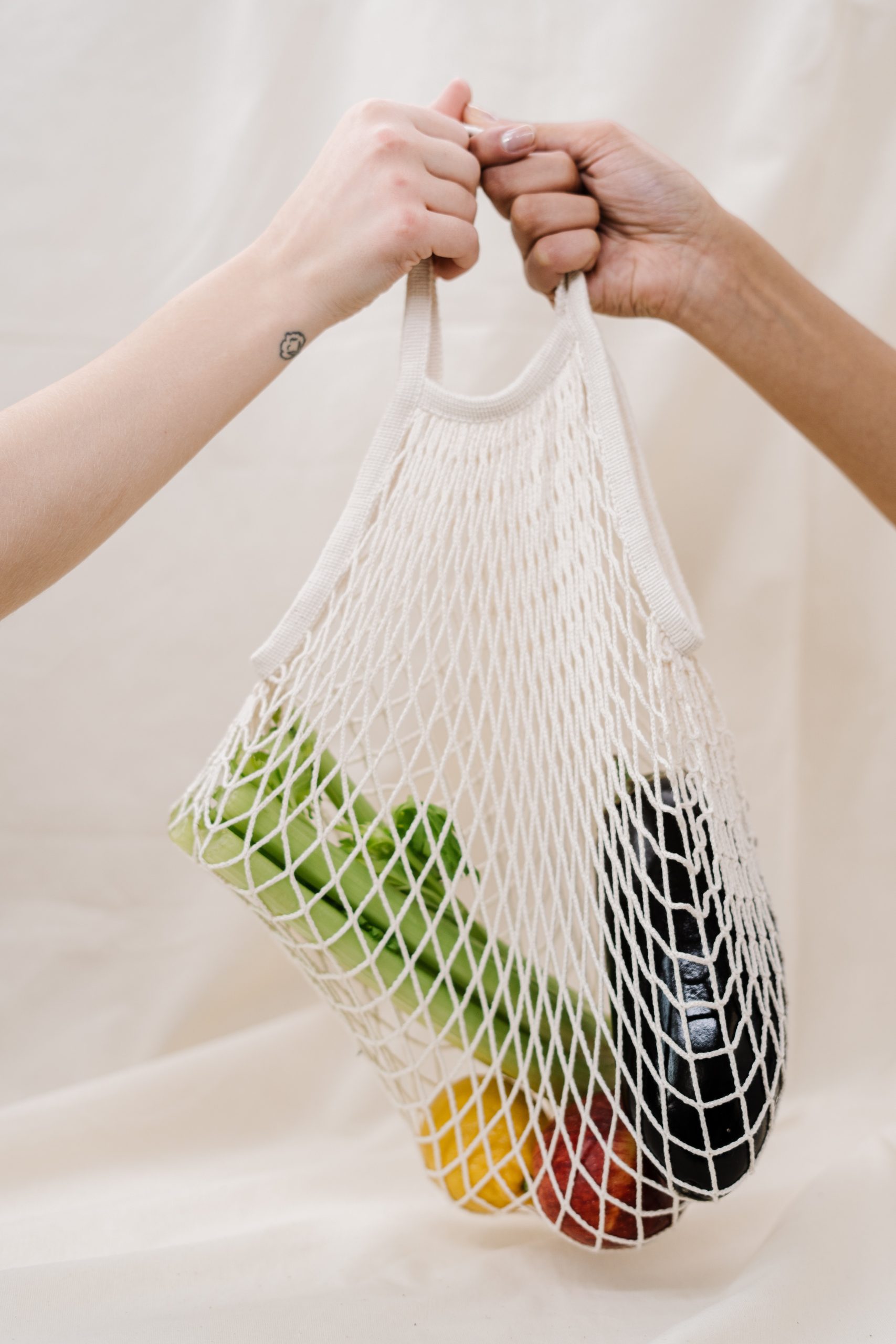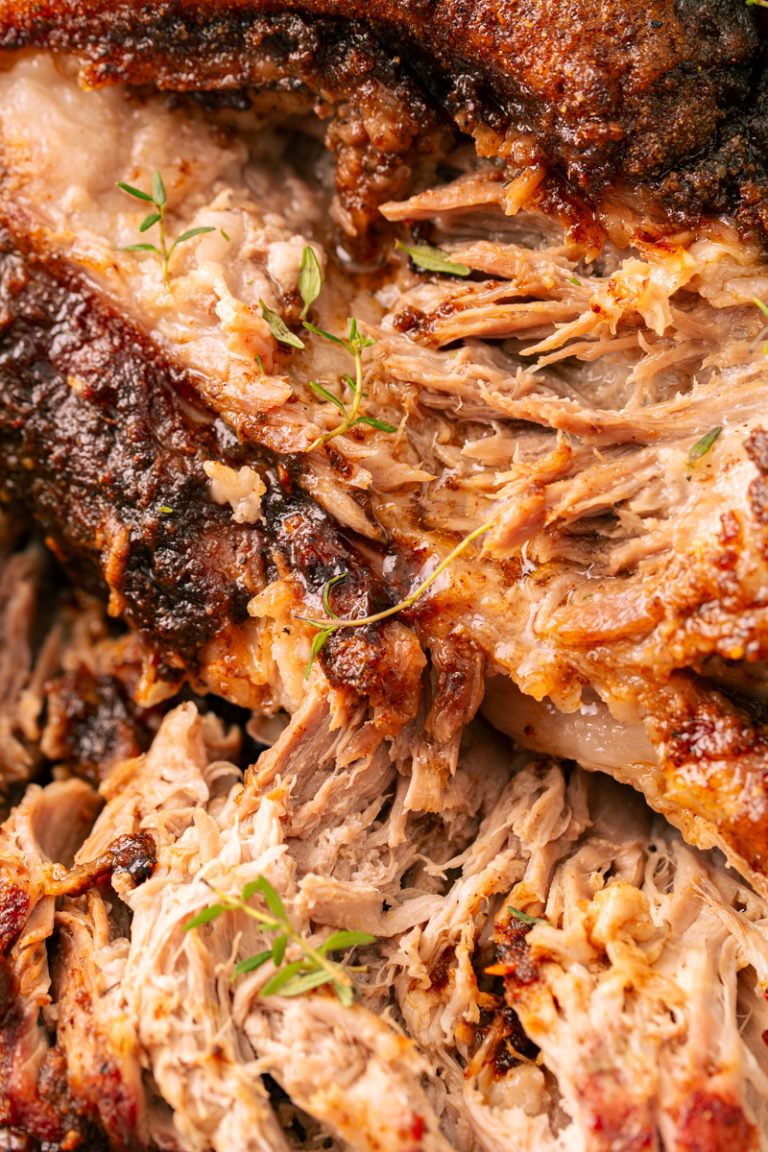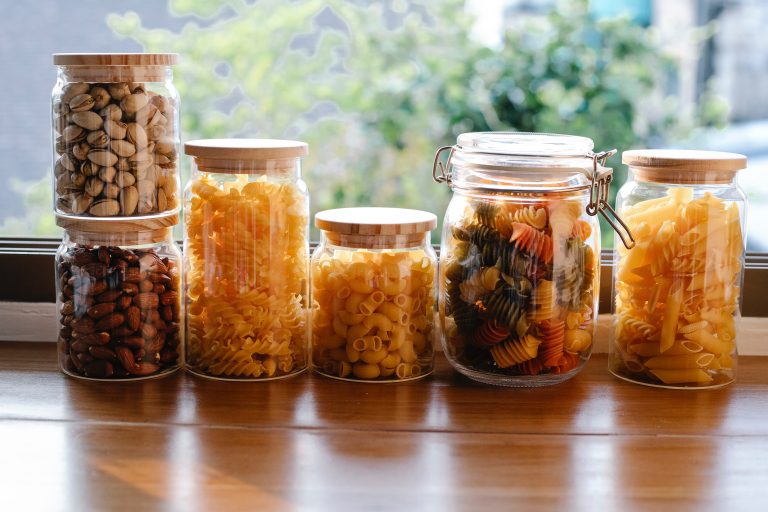Bulk Food, Stockpile Pantries, and Grocery Budgets
This post contains links to affiliate websites, such as Amazon, and we receive an affiliate commission for any purchases made by you using these links. We appreciate your support!
When you’re looking to save money on your groceries each month, the task can feel overwhelming. What steps can you take to be more mindful of your budget? How can you create a budget that works for you while also creating a stockpile or pantry to shop from during the year? Is buying in bulk possible or worth it? We’re going to talk about all that and more here.

What to know…
- Building a pantry stockpile
- What to consider when starting
- Where to shop for bulk groceries
- Big box stores or case lot sales
- Wholesale stores
- Online wholesale/bulk stores
- Additional Budget-Friendly Stores & Grocery Stores
- Mennonites and Amish Community Stores
- Farmers and homesteaders
- Utilize food banks and food pantries
- Additional ways to save money when grocery shopping
- Create a family budget
- Grocery pickup or delivery
- Top tips for shopping and prepping on a budget
- How often will you shop
- Buy non-food items in bulk once a year
- Buy in bulk from farmers
- Grow or raise your own food
- Making food shelf stable
- Search by State
Building a pantry stockpile
I don’t think I need to remind you of the past few years and the mental and economic toll it took on families all across the world. Do you know who didn’t have as much to fear? The ones who were prepared. Building a stockpile is essential to a family’s stability and success. The best time to plan and prep for an emergency is before there is one.
Whether we’re talking job loss, pandemic, natural disaster, or just a month that is tighter on funds than anticipated – building a shoppable pantry is key to being prepared and significantly less stressed than you would be otherwise. Building a stockpile not only can help yourself, but also your community.
When you have all you need, you’re more likely to bless others with overflow and abundance. This could be frozen meals stacked away in the freezer, an abundance of canned or preserved food, or soap you got at a discount and now have stacked away. There are all kinds of uses and reasons to be prepared in a smart and safe way without being classified as a doomsday prepper.

What to consider when starting
This may seem “duh” to say, but start by making a list of things that you go through in a hurry. Such as:
- Foods or items you go through constantly. Suppose your family eats rice, or potatoes with most meals. Or you have a large family and toothbrushes or toothpaste is continuously on the shopping list. Could you purchase in bulk for a lower price?
- What items do you seem to be constantly running to the grocery store for? I have an autistic son who only eats a hand full of things such as pasta, and ONLY angel hair. We have to be constantly stocked up.
- What sort of budget do you have monthly to work towards a stockpile? $5? $50 $500? Any answer is okay. Knowing what you’re working with will prevent you from entering into an emergency situation as you prepare for one.
- What foods does your family like to eat or products do they like to have? If your family doesn’t like peas, don’t buy them. No matter how great a sale you see. If Dawn dish soap cleans your messes the best, it’s no use in purchasing a cheaper or more eco-friendly brand if you have to use 2x the amount for doing the dishes.
- What is the rhythm of your family’s lifestyle? Are both parents working and do kids need to be able to cook or warm up meals? Are you homeschooling a bundle of kids and having to provide every meal for them? Would cooking in bulk or preparing for the week ahead in one day be beneficial or are you so busy that you don’t have the time to devote to an all-day cooking marathon?
- Do you budget or plan? If your paycheck is consistent and your weeks have even an unspoken routine to them, budgeting or meal planning could be helpful.
- Do you like to meal plan? Do you need help? Do you want to do it yourself but then spend hours doing math and online grocery shopping, to end up missing something completely?
There is no wrong answer to any of these. But asking yourself these questions and writing down your honest answers, and honest goals for the life you want and need, is of the utmost importance in your success.
Where to shop for bulk groceries
Buying in bulk is one of the quickest and easiest ways to build a prepper’s pantry. Though this can be costly if all done at once, the key is to pace yourself and shop around for the best budget-friendly deals. Stores are going to differ based on your location but here are a few ideas of what to plug into the search bar and find what’s local to you.

Big box stores or case lot sales
If you type in “case lot sales near me” in the Google search bar, you’ll pull up big box stores, or stores that sell in bulk. These types of stores are not like your typical grocery store or Walmart. These stores often have rotating products. They sometimes get amazing deals on items in bulk and then can pass those savings on to consumers looking to buy in bulk. Sometimes the pricing is cheaper due to the product’s expiration date soon approaching. Something to keep in mind.
One of the cons of these types of stores can be the rotating products. Because they do not have the same things every month or week, their flyers are usually not thorough nor are their websites up-to-date. These will be stores you need to physically visit to see what is on sale and available. This also means that you will do your best to stay on budget, by knowing what you are looking for. This will also be beneficial if you are not devoted to certain brands or organic foods. While you may find some name-brand or organic items here, it is not guaranteed.
Wholesale stores
These are stores such as BJ’s, Costco, and some restaurant supply stores. There are also state-specific wholesale stores. Search for “wholesale food stores near me” in the Google search bar and you will come up with ones based on your location. These stores will often sell in bulk compared to grocery stores. The products available stay relatively constant, the store may have an app or website, but you will likely need to pay a monthly or yearly fee to be a member.
The prices are not always better when compared to Walmart or grocery outlets. There have been a number of times that I have found buying multiple 10-pound bags of flour from the grocer was cheaper than the 50-pound bag of flour from BJ’s. Just do your research, bring a calculator and a phone with you, and don’t be shy about price-checking compared to other stores in the area.

Online wholesale/bulk stores
These would be places that offer co-ops or direct delivery such as Azure Standard, Jovial Foods, Country Life Foods, Thrive Market, and even sometimes Amazon. These are available all over the United States, usually require an approved application to join, and are a great way to meet like-minded people. The price of the foods is not always cheaper than what you would find at a local wholesale club, but often higher in quality with more organic options.
Some of these stores have PDFs on their websites, some require you to call for daily pricing, and some require minimum order quantities. For example, the ones with co-ops such as Azure, will require order minimums that must be met by the entire co-op, not the individual. This means that all the food is then sent on a semi-truck to a meet-up spot and the purchased items are delved out to those who ordered. There is often an additional fee at the pickup spot for the host and the ones delving out the orders. You can find spots local to you by using Azure’s website.
Worth noting that some like Azure, do have deadlines for monthly ordering. Also, they do not always have in stock what you order, but they will notate that on the site usually.

While sometimes these style co-ops are not necessarily cheaper, the added bonus is meeting like-minded people. From there the opportunities are endless for helping each other.
Additional Budget-Friendly Stores & Grocery Stores
- Aldi – limited items, available across the US but not necessarily within driving distance.
- Thrive Market – an online retailer especially good for specialty items, auto-ship items for building a stockpile or making sure your essentials are covered, known for their organic selection, and their price matching policy.
- Amazon – offers free shipping on most items with the ability to choose auto-ship on select items for a 5% discount. This is helpful if you have things like paper towels or toilet paper on auto-ship. You’ll likely end up with a little bit of a stockpile at the end of each month that will continue to snowball.
- Walmart, Target & local grocery stores – these stores will commonly offer free pickup or delivery, saving you time, gas, and money with little “extra” things we tend to pick up in-store. These will likely have coupons or an app you can use for points or money off as part of a loyalty program. You can also shop online enabling you to price shop. Then have the cheapest one delivered to the store or to your home.
- Dollar General, Dollar Store, Dollar Spot, or any variation – these chains are hit or miss. But when they hit, they often really hit providing deep discounts on food, toiletries, school supplies, clothing, and even home decor.
Mennonites and Amish Community Stores
Similar to case lot sales, these communities often have stores open to the public. You can get deep discounts on food. Some may be expiring soon, some may be in bulk, etc. You can also support their crafted items such as cutting boards and handmade soaps. This is really a luxury for purchasing and general education if you have one in your area. Check it out during the summer and fall harvest times for incredible deals on produce.

Farmers and homesteaders
As a homesteader myself, and daughter to farmers, I can assure you that if farm-to-table eating is your goal, you’ll never get better quality or cheaper rates than buying right from the farmer or homesteader. This is a great way to ensure your dollars directly support the lives of others in your community. Better still, many will welcome a conversation of bartering. If you want to eat and support your local farmer but can only offer hard labor and have no extra cash, there is always a need for extra hands. This is especially helpful if funds are tight, but you have extra time.
Utilize food banks and food pantries
They’re there for a reason. If you’re struggling, use them. The more they get used the more funding and support they get from the government and local agencies. They need to be needed, and they are happy to help. Take advantage of multiple food pantries if you need to. Many churches also have food assistance programs, just call and ask.
There have been a few times off and on during about a 3-year period that we utilized these programs. Sometimes it would give us just enough back in our budget to be able to go purchase the specific products that certain family members needed, like diapers or pasta, and then the food bank items were used for all the other members or your budgeted grocery money is used to fill in the gaps.
Additional ways to save money when grocery shopping
As you can see there are many options for where to shop. When starting out mastering your budget and getting used to price shopping, don’t tackle it all at once. Start by finding maybe five stores near you.

Select the top 10 things on your list that you will be purchasing the most of or would typically be higher in price (such as ground beef over 10 cans of green beans). Then look at the prices for those items at those five stores by searching on their website, app or calling the store if need be.
Likewise, if you can make a list of standard items your family goes through every week, the things you pick up every time you go grocery shopping, compare that list between the five stores, and figure out which store will give you the quality and price you are looking for. Being able to then know that your budget for the necessities is relatively stable and what amount is expected, will help you to then make a more educated decision on the extras, or other items you will need each week or month.
Create a family budget
Knowing how much you have left over after bills is critical. Budgeting in general is a must, especially when pinching pennies or living frugally. It really is just good common practice to know where your money is going every week or month anyhow.
According to the USDA, in 2023 thanks to inflation, families are spending 10-11% of their “disposable” income on groceries. Another way to look at it is $25 per person per week, or $100 per person per month in your family. Please note that these numbers are fluid and ballpark figures.

The below categories and figures are from this source.
- Thrifty plan. For a thrifty budget for a family of four, you would spend $225.60 a week or $977.70 a month. The Thrifty Food Plan, incidentally, is used to decide the benefit amounts for the Supplemental Nutritional Assistance Program, or SNAP.
- Low-cost plan. For a low-cost budget for a family of four, you can plan on spending $241.70 a week or about $1,047.10 a month.
- Moderate-cost plan. With a moderate budget for a family of four, you would spend $301.20 a week for groceries or $1,304.70 a month.
- Liberal budget. For a liberal budget for a family of four, you can plan on paying $363.70 a week or $1,910.60 a month.
Grocery pickup or delivery
If you know that you have low self-control, anxiety, or lose track of costs while shopping in person, utilizing a grocery pickup can help you stay on budget. While some companies will add a shopping fee or a delivery fee (if applicable) others will not. Be sure to check your local stores and be honest with yourself. If a $5 grocery fee saves you from spending even $20 extra in-store, it ends up costing you less to have someone else do the shopping.
The cons or flaws in this method primarily come down to substitutions or in-store clearances. Many stores such as Walmart will have a bakery clearance section that you cannot take advantage of when shopping online. Substitutions happen often as well. You cannot always be guaranteed that you’ll get a substitution you’re happy with, that the produce selected meets your standards, or that it will be the same price as what was selected.
Also, if they are out of green beans for example, for shepherd’s pie you planned, you would know that corn could be substituted. The workers do not have the knowledge of what you plan to do with ingredients, nor the ability to make that kind of decision for you. Which could land you back in the grocery store for some extra items anyhow.

However, even in this scenario, you could run in while there for pickup to purchase the few remaining items you need. Not convenient nor easy when you have a child or a few – but the groceries in the car waiting for you should help you not wander about the store and purchase more than you initially went in there for.
Plan your day. You may need to devote an entire day to your grocery shopping. But spending one day going out and hitting up different stores will save you gas in the long run. Especially, if like me you live in the country and have to drive 40 minutes one way to get to a store.
It may be tiresome on you and on any littles you have with you. Keep that in mind and give yourselves some extra grace and snacks. Plan snacks, drinks, and entertainment beforehand so you do not end up spending more money or eating what you just purchased, while you’re out and about.
Top tips for shopping and prepping on a budget
Shelf stable items, when they’re on sale by two or more. When it’s in the budget, by a couple extra. Only buy what you know your family will eat. Do not buy canned peas just because they’re on sale when your family will only eat frozen peas. Don’t tell yourself, “They’ll eat it if they’re hungry enough.” They likely will not be hungry enough and you will just keep pushing them to the back and picking something else to serve because you know they don’t really like the peas and end up thrown out anyhow.

How often will you shop
Decide how often you’re going to go grocery shopping. Saving $10 at the grocery store but having to go out multiple times per week or even once per week when you live 30-50 minutes away from the store, isn’t going to save you money.
Buy non-food items in bulk once a year
I buy enough toothpaste or hair care once a year to last us the year, especially if they’re on sale. You’ll find the best deals around Christmas time. But if you have a RiteAid or CVS near you, you can often get toiletries at deep discounts using their coupon program coupled with coupons from the newspaper. You can also look up “[brand name] coupons” on Google for manufacturer coupons.
Buy in bulk from farmers
Better quality, pricing varies, and some farmers are open to bartering. Split with family members or community friends for better pricing if you know you won’t use it soon enough. For example, corn, go in with another family you know to get 100 ears of corn and can them together. Or partner with a family that has a freeze dryer. Purchase the food yourself and split it for use in the freeze dryer.

Grow or raise your own food
Along with creating a pantry to shop from – only plant things your family will eat or you know you can sell. It’s tempting to grow and can and preserve all the things, but if your family will not eat it and you cannot sell it for one reason or another, you’ve wasted time, money, and food.
Making food shelf stable
Using a freezer dryer or a dehydrator is a great way to make use of fresh produce or bulk items on sale. One of the quickest and easiest ways to waste money is by shoving food into the back of the refrigerator and having it go bad before you get to use it. Do yourself a favor and invest, by yourself, or with another family in items that help keep food longer.
Here are some of my must-have items for food processing:
- Freeze Dryer
- Dehydrator
- Waterbath Canning
- Pressure Canning
- Mylar Bags
- Oxygen Absorbers
- Fermentation Kits
- Food Saver Vac

Search by State
Here is a list of stores by state that we have found or readers have suggested as available in your area. If you have more to add to the list, please leave a comment or email us at [email protected]
- Alabama
- Alaska
- Arizona
- Arkansas
- California
- Colorado
- Connecticut
- Delaware
- Florida
- Georgia
- Hawaii
- Idaho
- Illinois
- Indiana
- Iowa
- Kansas
- Kentucky
- Louisiana
- Maine
- Marden’s
- BJ’s
- Costco
- Native Maine
- Downeast
- Save A Lot
- Food City
- Big Lots
- Shaws
- Market Basket
- Maryland
- Massachusetts
- Michigan
- Minnesota
- Mississippi
- Missouri
- Montana
- Nebraska
- Nevada
- New Hampshire
- New Jersey
- New Mexico
- New York
- North Carolina
- North Dakota
- Ohio
- Oklahoma
- Oregon
- Pennsylvania
- Rhode Island
- South Carolina
- South Dakota
- Tennessee
- Texas
- Utah
- Vermont
- Virginia
- Washington
- West Virginia
- Wisconsin
- Wyoming






